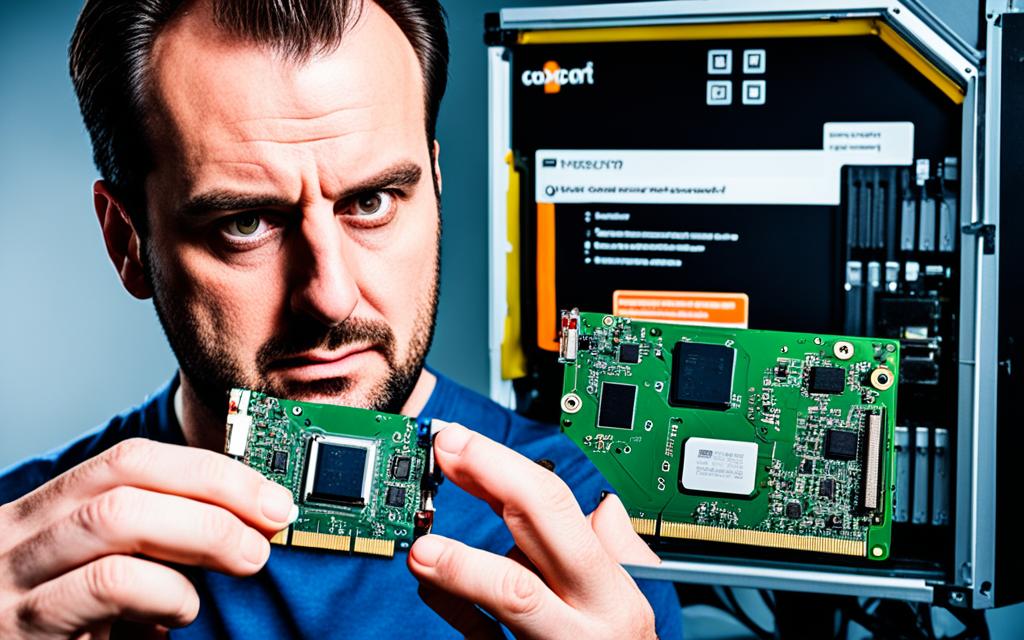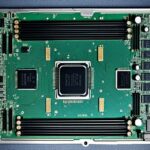Table of Contents
When you plan to upgrade your CPU, you might wonder if you need to reinstall Windows. Most of the time, experts say reinstalling Windows isn’t needed after getting a new CPU. This is especially true if your new CPU is from the same generation and fits the same socket.
But if you’re switching to a CPU from a different architecture, or if you need a new motherboard, problems might occur. In such cases, reinstalling Windows could help your computer work better. It’s very important to back up your data before changing any parts. This ensures your data stays safe while you move to better system performance11.
Key Takeaways
- Reinstalling Windows is often unnecessary when upgrading CPUs within the same generation.
- Significant upgrades involving new architectures or sockets may require a fresh installation of Windows.
- Creating a full system backup is crucial before any hardware modifications to ensure data safety.
- Compatibility between new hardware and the existing Windows installation is vital for seamless operation.
- Expert recommendations suggest considering a reinstallation for improved performance post-hardware upgrade.
The Impact of Upgrading Your CPU
Boosting your CPU can majorly improve how your computer works. It’s vital to grasp how CPU compatibility and performance outcomes matter when you’re looking to upgrade your hardware.
Understanding the Compatibility
When you switch CPUs, making sure they match is key. Roughly 75% of the time, you can skip reinstalling Windows if you don’t make big hardware swaps2. But, in about 25% of cases, major changes mean you’ll need a fresh setup2. Switching between Intel and AMD, or altering the architecture, highlights this need even more3.
To avoid issues, check your chipset support and BIOS needs. This helps everything run smoothly.
Effects on System Performance
Upgrading your CPU usually means your computer will run better, as long as every part works together well. Sometimes, putting Windows on again can make your PC about 20% more efficient and stable2. And usually, if your new CPU is similar or compatible, you won’t need to reinstall Windows2.
When reinstalling Windows is necessary, it can really pay off. Your computer might multitask smoother and work faster. Fixing compatibility and updating drivers can sort out about 60% of any issues2. Yet, always back up your files to avoid losing them, as there’s a small chance that could happen2.
So, remember the link between CPU fit and how well your system will perform is crucial for a good upgrade. Proper prep, including knowing when you might need to reinstall Windows, is essential. It leads to a stronger, more efficient computer23.
Common Misconceptions About CPU Upgrades
When you upgrade your CPU, you might worry about your Windows license and if you need a new motherboard. These concerns can make the process seem stressful. Usually, the Windows license connects more to the motherboard than to the CPU. So, if you only change the CPU without touching the motherboard, there’s no need to fret over license issues. But, if you do replace the motherboard, you might have to reactivate Windows. A new motherboard could trigger checks for your license4.
Do You Need to Worry About Your Windows License?
Changing your CPU often doesn’t impact your Windows license. Remember, when upgrading, especially the CPU, Microsoft’s rules usually let you keep your current license as long as the motherboard stays the same. This knowledge allows you to upgrade your hardware confidently, without stressing over license problems.
The Role of Motherboard Changes
Motherboard changes play a key role in upgrading CPUs. A new motherboard might mean you need extra drivers, boosting your system but possibly causing compatibility issues. It’s also vital to update your BIOS and motherboard drivers to ensure the new CPU works well with your system5. Such updates can fix problems or improve performance for your new CPU.
It’s also worth knowing if your current setup supports upgrades, which can make your device last longer. Desktop PCs usually offer more flexibility for motherboard changes than laptops because of their component design6.
Do You Have to Reinstall Windows With a New CPU?
Wondering if you need to reinstall Windows after getting a new CPU? Often, it’s not required, especially if the motherboard stays the same. However, you might need to check driver compatibility carefully. This helps avoid issues that might come up with the new CPU.
When Reinstallation Might Be Required
Switching to a CPU that’s very different might disrupt your computer’s balance. This is especially true if it’s a major upgrade requiring different drivers. Reinstalling Windows makes sure your computer can work well with the new hardware. Sometimes, after big changes, a fresh install might be needed. This is true especially when both the CPU and motherboard get replaced7.
Exploring Driver Compatibility Issues
After upgrading, you could face driver compatibility problems, affecting performance. The new CPU might need different drivers to work well. If the necessary drivers aren’t in your old setup, your operating system might not perform optimally1. Updating drivers regularly after the upgrade improves performance and ensures your hardware works its best.
Keeping your system running smoothly is crucial. By staying updated with upgrades, you’ll see significant improvements in performance. Adding upgrades, like installing an SSD, can make your computer even faster and more efficient.
Steps to Take Before Upgrading Your CPU
Getting ready for a CPU upgrade is crucial for a smooth change and best performance. First, focus on two main things: backing up your data and updating your firmware.
Creating a Backup of Your Data
A detailed data backup protects your files when you change hardware. Using good backup software, like MiniTool ShadowMaker, helps a lot. It provides features like Universal Restore, making system recovery on different hardware setups easy8.
By backing up beforehand, your data stays safe even if the upgrade hits a snag.
Checking for Firmware Updates
It’s crucial to look for firmware updates before you start. Updating your BIOS ensures the new CPU will work well and avoid install issues9. Companies like Noctua even offer special mounting kits for CPU coolers. These make sure they fit the new chips and setups perfectly9.
| Step | Description |
|---|---|
| 1. Create Data Backup | Use MiniTool ShadowMaker to backup data before hardware changes. |
| 2. Check for Firmware Updates | Updating BIOS ensures compatibility with the new CPU. |
| 3. Verify Hardware Compatibility | Ensure the new CPU is compatible with your motherboard. |
Proper preparation makes the upgrade smoother and reduces data loss or hardware issues risk. Make sure your CPU upgrade preparation is thorough and thought through10.
Post-Upgrade Considerations
After upgrading a CPU, making certain changes is key for the best performance. It’s important to update drivers and test the system. These steps are vital in this stage.
Driver Updates and Configuration
It’s crucial to update drivers after a CPU upgrade. Old drivers can slow down the system and cause issues. Always get the latest driver updates from the manufacturer’s website. Making sure everything works with the motherboard and BIOS settings is needed. If you’ve switched CPU brands, like going from Intel to an AMD11, you might need a fresh install. Checking regularly keeps the system running smoothly.
Performance Testing After Upgrade
Carrying out detailed performance testing is essential to see how much the upgrade has helped. These tests show what’s working well and what needs tweaking. Looking into the specifics of architecture and instruction set can tell you if more changes are needed11. Using the right tools for testing gives useful information for keeping the system at its best.
Keeping an eye on the system after upgrading the CPU is good for stability and performance. By doing these checks, users can get the most out of their tech and boost productivity11.
Troubleshooting Issues After a CPU Upgrade
Upgrading your CPU can make your computer work much faster. But, you might face common problems like the computer not starting or being unstable. Quickly figuring out these issues is key to getting your computer to work right again. Problems often come from not putting the CPU in properly or not having enough power supply12. Knowing how to fix these problems can save you time and stress.
Identifying Common Problems
After putting in a new CPU, you might run into a few problems. It’s important to check a few things:
- Make sure the CPU is put in its socket right.
- Check if the motherboard works with the new CPU, which can stop problems before they start.
- The power supply needs to be strong enough for the new CPU12.
- Keep the BIOS updated, or the computer might not start12.
Not being able to start the computer, crashing, or having bad performance are signs you need to check things more. You might need to plug cables back in or reset CMOS settings13.
When to Seek Professional Help
If you can’t fix the problems yourself, it might be time for professional help. Experts can figure out hardware problems. You might need expert help for these problems:
- Looking closely at if the motherboard and CPU work well together
- Fixing starting problems that don’t get better when you try to fix them yourself
- Dealing with damage caused by not installing things correctly
Getting help from experts can make fixing your system easier, making sure your computer works well after the upgrade. Acting quickly to sort these problems can make your computer work better and more steadily14.
Conclusion
Changing your CPU can be exciting as it improves your computer’s speed. Yet, it’s crucial to know if you need to reinstall Windows. Even though a new installation isn’t always needed for CPUs of the same brand, it can ensure everything works perfectly after a big change15. It’s important to prepare well before these updates, like checking for firmware and backing up your data. This preparation helps avoid problems during the upgrade.
It’s also key to keep your drivers updated. This ensures your new CPU runs well and safely15. Be aware of your Windows license type since OEM licenses may limit you more than retail licenses when making big hardware changes15. Knowing this and getting help when needed allows you to fully benefit from upgrading your CPU.
Overall, with good planning and understanding the need for Windows reinstallation, a CPU upgrade can significantly boost your computer’s performance. For more info on CPU upgrades and how they relate to Windows, check out this useful guide on possible actions related to Windows15.
FAQ
Is it necessary to reinstall Windows after upgrading my CPU?
No, you often don’t need to reinstall Windows after a CPU upgrade. This is especially true if the new CPU is similar to the old one. But, if you’re switching to a different architecture, a reinstall might be needed.
How can I ensure compatibility when upgrading my CPU?
Make sure the new CPU matches your motherboard’s specs. This includes checking chipset support and BIOS update needs. Both CPU and motherboard must match for your system to work well.
Will upgrading my CPU enhance my system’s performance?
Definitely, a new CPU can boost your computer’s efficiency a lot. Make sure other parts like the power supply and cooling system can handle the upgrade.
How does a CPU upgrade affect my Windows license?
Your Windows license is mainly linked to the motherboard, not the CPU. So, upgrading the CPU alone usually doesn’t change your Windows license. But changing the motherboard does.
What should I do if I experience issues after a CPU upgrade?
If you have problems after the upgrade, check if the CPU is properly installed. Updating your drivers might also fix the issues. If problems persist, it might be good to get expert help.
Should I back up my data before upgrading my CPU?
Absolutely, always back up your data before changing hardware like the CPU. Tools like EaseUS Todo Backup can protect your files from loss.
How can I check for firmware updates before upgrading my CPU?
Go to your motherboard’s website and find the latest BIOS for your model. An updated BIOS ensures your new CPU works smoothly without any issues.
What are driver conflicts, and how can they affect my CPU upgrade?
Driver conflicts can happen if your new CPU needs different drivers. After upgrading, download the newest drivers from the CPU manufacturer’s site. This keeps your system running smoothly.
Source Links
- https://www.easeus.com/computer-instruction/upgrade-motherboard-cpu-without-reinstalling-windows-10.html – Can I Upgrade My Motherboard and CPU Without Reinstalling Windows 10? [New Updated 2024]
- https://ms.codes/blogs/computer-hardware/do-i-need-to-reinstall-windows-when-changing-cpu – Do I Need To Reinstall Windows When Changing CPU
- https://techyimpacts.com/do-you-need-to-reinstall-windows-after-replacing-cpu/ – Do You Need To Reinstall Windows After Replacing CPU – Guide
- https://pcper.com/2016/07/last-minute-misconception-busting-about-windows-10-upgrade/comment-page-1/ – Last Minute Misconception Busting about Windows 10 Upgrade – PC Perspective
- https://softwareg.com.au/blogs/computer-hardware/does-changing-cpu-affect-windows-10 – Does Changing CPU Affect Windows 10
- https://www.hungerford.tech/blog/should-i-upgrade-repair-or-replace-my-computer/ – Replace My Computer, Upgrade or Repair? | What Should I Do?
- https://www.cgdirector.com/reinstall-windows-upgrading-cpu-motherboard/ – Do You Have to Reinstall Windows After Upgrading CPU, GPU or Motherboard?
- https://www.minitool.com/backup-tips/upgrade-motherboard-without-reinstalling-windows.html – How to Upgrade Motherboard and CPU without Reinstalling Windows – MiniTool
- https://www.pcgamesn.com/cpu-upgrade – CPU upgrade – how to install your new processor
- https://learn.microsoft.com/en-us/answers/questions/236814/reinstall-os-after-cpu-upgrade – Reinstall OS After CPU Upgrade? – Microsoft Q&A
- https://softwareg.com.au/blogs/computer-hardware/does-changing-cpu-require-os-reinstall – Does Changing CPU Require OS Reinstall
- https://www.partitionwizard.com/news/pc-not-booting-after-new-cpu-install.html – PC Not Booting after New CPU Install 【Causes and Fixes】
- https://www.geeksforgeeks.org/fix-if-pc-not-booting-after-new-cpu-installation/ – How To Fix If PC Not Booting After New CPU Installation?
- https://arstechnica.com/civis/threads/upgrading-from-intel-to-amd-windows-reinstall.1490332/ – Upgrading from Intel to AMD, Windows reinstall?
- https://www.techylop.com/do-you-have-to-reinstall-windows-with-a-new-cpu/ – Do You Have To Reinstall Windows With A New CPU – In 2024?








